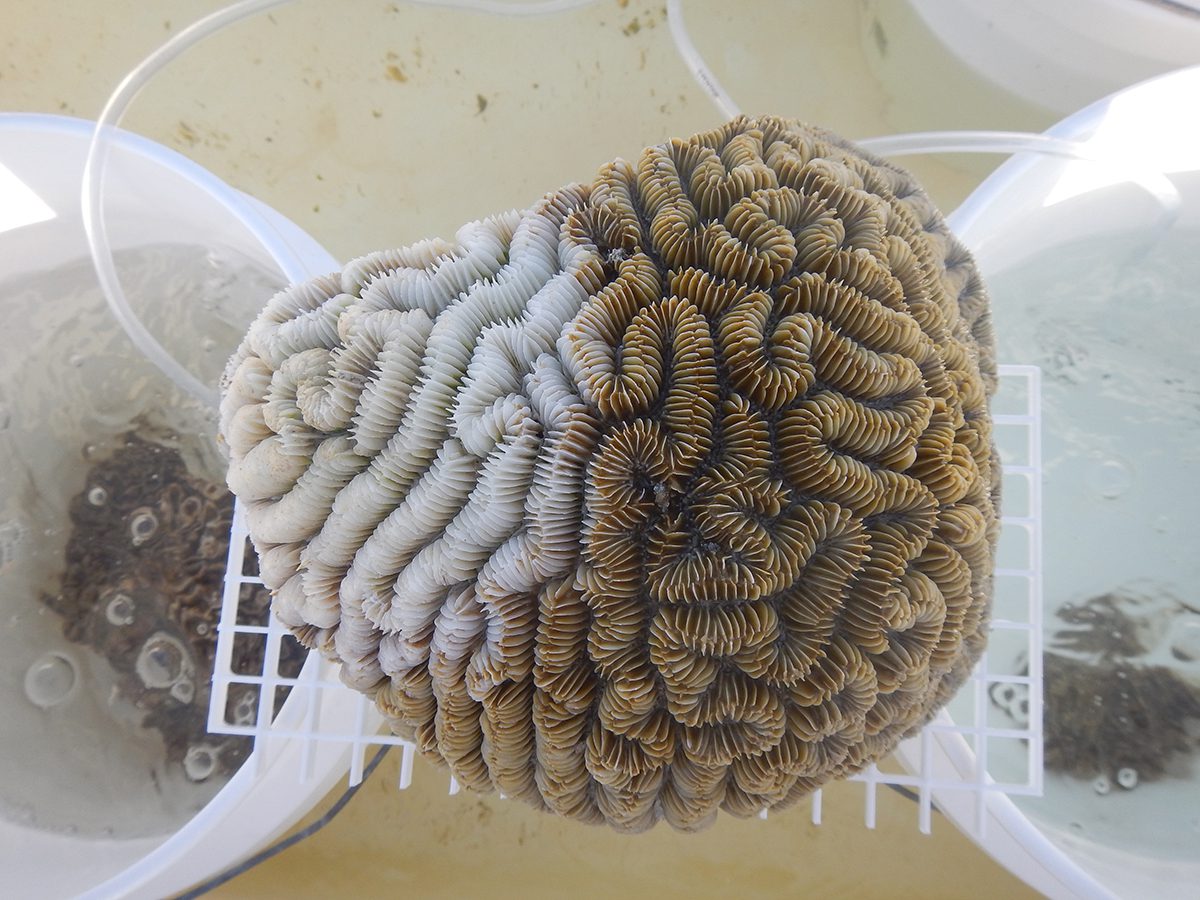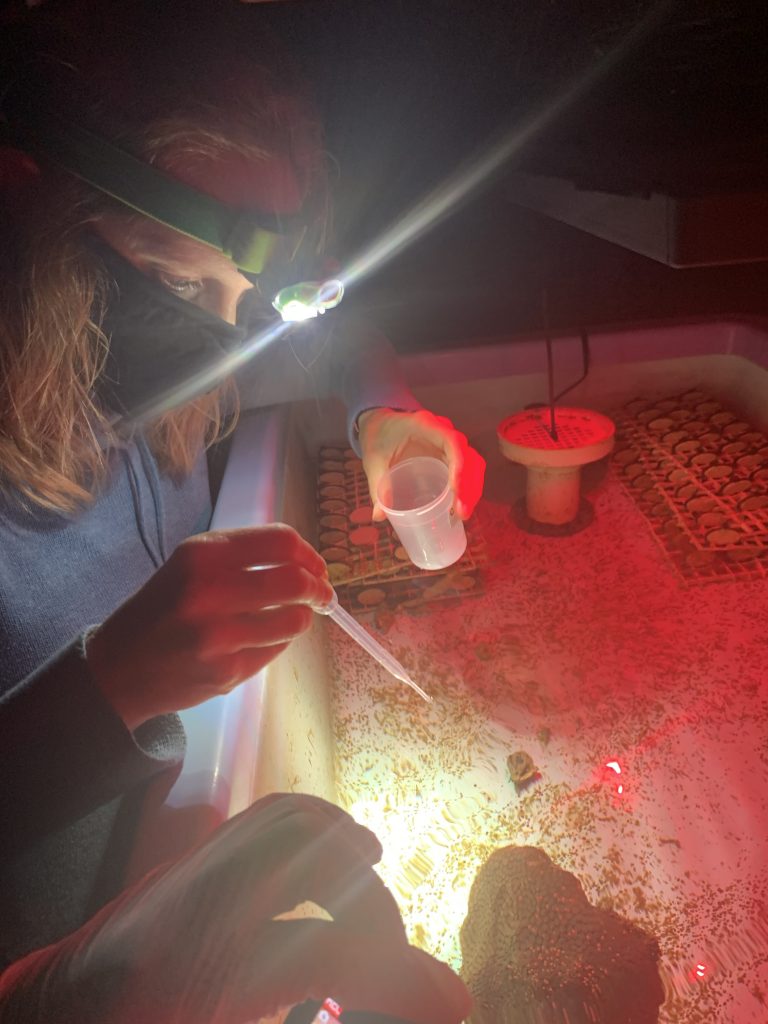
WILMINGTON – The race is on to revive the ocean’s growingly imperiled coral reefs.
Damage and decay caused by everything from warming sea temperatures to pollution to overfishing to disease are erasing these underwater architectural structures crucial to other marine life and coastal shorelines.
Supporter Spotlight
University of North Carolina Wilmington researchers recently received grants totaling about $2 million that will allow them to further investigate potential ways of protecting coral against disease and climate change.
The funding, which comes from $18 million in global grants doled out to fast-track coral conservation and restoration research, also paves the way for a historian at the university to examine ethical questions about potential implications of releasing coral genetically modified to resist climate change into the wild.
Super coral?
In 2020, UNCW Associate Professor Nicole Fogarty and her team of researchers at the university’s Center for Marine Science became the first to spawn two species of endangered Caribbean coral in a laboratory.

In the three years since, the lab’s success at spawning baby coral prompted the move to a larger space — actually a separate building dedicated entirely to coral reproduction.
About a half-million larvae have been spawned with this year yielding the highest numbers yet. The lab has shipped roughly a quarter-million of those larvae to research partners in Florida and the University of North Carolina Chapel Hill for further experimentation.
Supporter Spotlight
“We can actually test the various stressors that corals are experiencing, especially the environmental stressors so namely things like increased temperature, decreased pH or ocean acidifications, changes in light intensity and light spectrum, and dissolved oxygen to mimic what’s occurring,” in their natural environment, Fogarty said.
She is part of a research collaborative that received a nearly $1.5 million, three-year grant and includes Jake Warner, a developmental geneticist and assistant professor, and Nathan Crowe, a science historian and associate professor, who will work in conjunction with researchers with the University of the Philippines.

Fogarty will provide coral larvae spawned in her lab to Warner, whose research team will then use genetic editing tools to try and create corals that can resist warming sea temperatures and other climate change-related phenomena.
Warner said researchers will also be able to study corals in ways that scientists haven’t been able to do before, including examining the functions and interactions of genes and proteins, a field referred to as functional genomics.
Warner stressed that coral genetically modified in his lab will remain there.
“Now we’re not engineering corals and then putting them back out into the wild,” he said. “The goal is to develop this technology so that if we ever decide we don’t need it, we don’t have to reverse engineer it, it’ll just be there ready to go because using this kind of technology in the wild brings some very important ethical considerations.”

That’s where Crowe comes in.
He explained that only recently have researchers begun to think about genetically modifying organisms to combat climate change.
“And those conversations have been only almost completely around climate change issues on land so the marine environment opens up new questions about aims and goals for the marine environment and creating new ways in which these corals could spread,” he said.
Crowe said it is important that these conversations are held now to help regulators make future policy decisions relating to releasing genetically modified corals into the wild.
The team plans to share its findings during the International Coral Reef Symposium to be hosted in New Zealand in July 2026. Crowe plans to host a conference at UNCW in summer 2025, inviting scholars to discuss the study.
“The idea, rather than kind of providing them just the technology and then letting them figure out what issues to consider, the hope is to provide those types of laid out various issues, concerns, potentials for the technology, so that each individual policy group can do what’s right for them,” he said. “So often we have developed these technologies and then, in retrospect, think about the issues that they might bring up. Then, what happens is, and we’ve seen this over and over again, the realities of those technologies can then make people feel as though they have very limited options.”
“CMS and UNCW are really doing some of the foremost work in this area in the world and so it’s really an important place for us to have these conversations,” he said.
Building biological defenses
Researchers looking at ways to restore and protect coral reefs know the clock is ticking.
Natural processes and human activities have severely damaged many of the world’s coral reefs.
Scientists predict that, if this trend continues, living corals on many of the world’s reefs will be dead in 20 years.
Coral reefs cover more than 4 million acres of sea floor in waters of the United States and its territories in the Atlantic and Pacific oceans, the Gulf of Mexico and Caribbean Sea.
More than 25% of all marine species live in coral reefs.
In addition to their importance to marine life, coral reefs also serve as coastal shoreline guardians.
“They provide this solid, basically limestone structure that’s surrounding coastlines and that’s really important for preventing runoff and also coastal protection from storm surges,” said UNCW Assistant Professor Blake Ushijima. “You can imagine the amount of force from (coastal) storm surges and runoff that can occur.”
Ushijima has received a more than $400,000 grant to fund ongoing research on developing probiotic treatments to protect coral against stony coral tissue loss disease, or SCTLD.
This disease is decimating coral in the Caribbean, which is experiencing one of the worst disease outbreaks in recorded history for corals.
SCTLD is particularly dangerous because it attacks coral tissue, melting the tissue away like a flesh-eating disease.
“Some of the most susceptible corals, you have 100% mortality,” Ushijima said. “It’s just gone.”
The grant awarded to Ushijima will be used to open a site in San Andres, a Columbian Island, adding to the small number of hubs being established in the Caribbean where researchers are testing for different probiotics and developing potential treatments against SCTLD.

These hubs, including those being built in Montserrat in the Leeward Islands and the Dominican Republic, include so-called bio secure facilities. Water used in these facilities is treated to remove potentially bad microbes and re-treated before it is released back into the natural environment.
Testing probiotic treatments at different facilities throughout the Caribbean will help scientists discover which treatments work best for corals in those regions.
Brain corals and maze corals, which build the bases of reefs, are particularly susceptible to SCTLD, Ushijima said.
“This disease seems to specifically target what we call the mounding coral, like the brain corals,” he said. “They’re solid limestone. The bad part is those tend to be slower growing, but they’re building the very structures of the reefs.”
SCTLD affects at least 24 of the 50 or so coral species in the Caribbean. The disease was discovered off the coast of Miami in 2014 and has since spread to two dozen different territories and countries, Ushijima said.
He is partnering on the project with researchers from the Perry Institute of Marine Science and University of Massachusetts Lowell as well as various Columbia-based organizations.
“We know (SCTLD) is a waterborne disease, but we don’t know how specifically it’s transmitted, but it’s reached across the Caribbean so it’s very unprecedented,” Ushijima said. “The scary part is it’s not going to be the last disease outbreak. It’s just one of many that will occur just from how this world is going. The more we encroach on it, the more battered the environment and more pollution, climate change, it’s going to cause all these chain reactions.”








